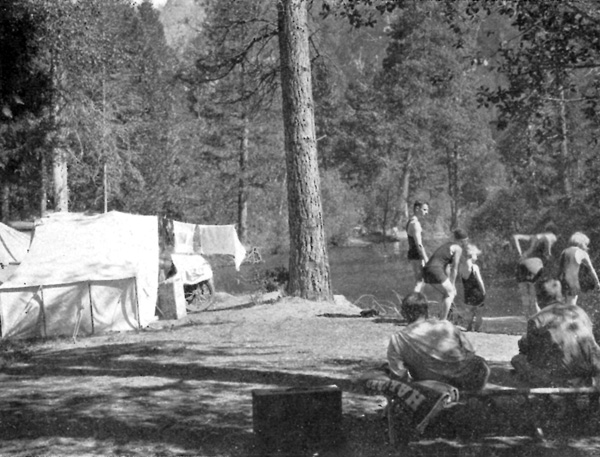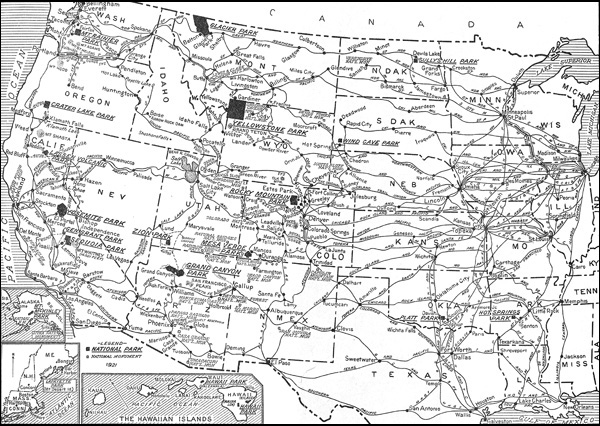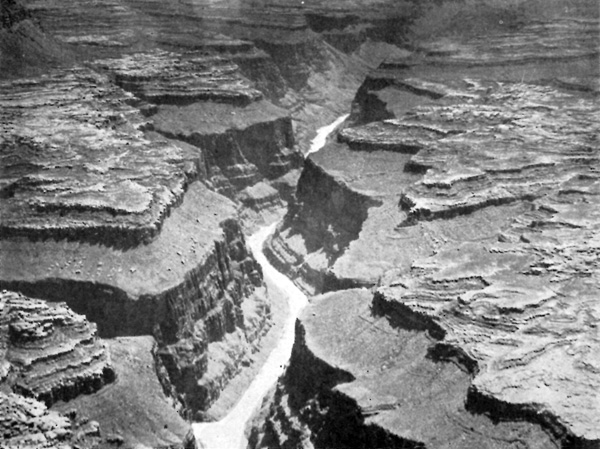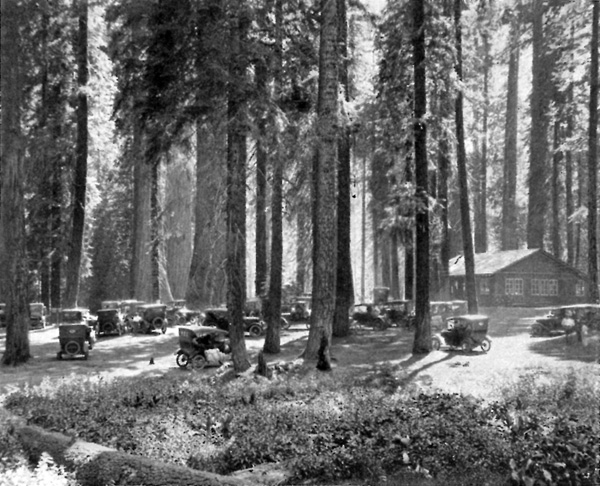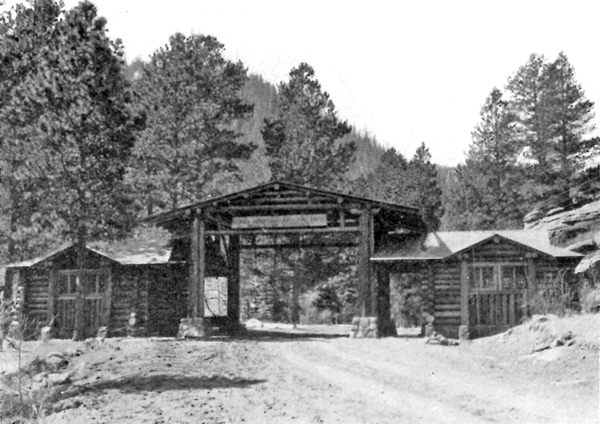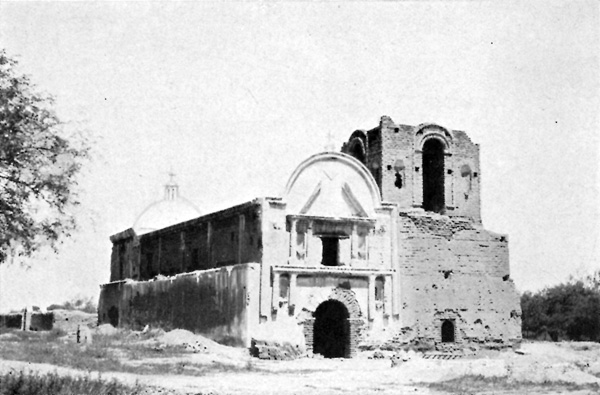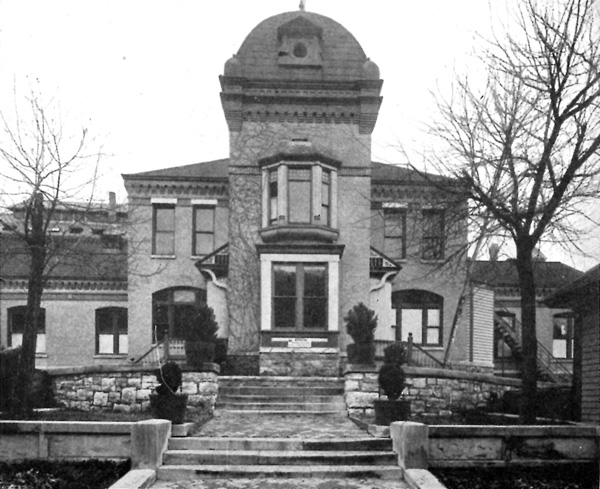
CELEBRATING THE NATIONAL PARK SERVICE CENTENNIAL • 1916-2016
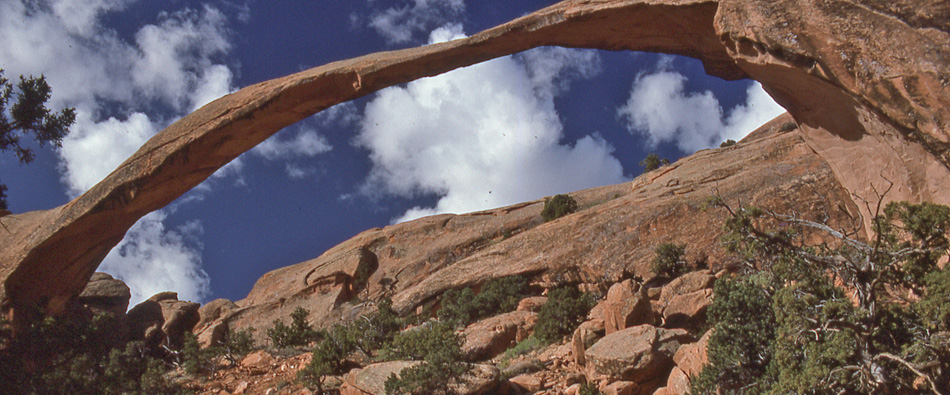
Arches National Park
|
This article contains extracts from the Fifth Report of the Director of the National Park Service to the Secretary of the Interior for the Fiscal Year Ended June 30, 1921 and the Travel Season 1921, the fifth anniversary following the establishment of the National Park Service. Annual Report of the Director of the National Park Service by Stephen T. Mather, Director. Department of the Interior, Sir: It gives me great pleasure to hand you herewith the fifth annual report of the National Park Service, covering its fiscal activities for the year ended June 30, 1921, and the tourist season which officially closed for the purposes of this report on September 30 last. I believe that the report will indicate that the parks are beginning to measure up to the great national use for which they were created and are to-day the most popular public institutions of the Federal Government. A REMARKABLY HEAVY TOURIST TRAVEL. The outstanding feature in this year's review of park achievements again is the remarkably heavy tourist travel. Early in the year, I remember, considerable apprehension was expressed lest labor conditions, high taxation, and other perplexing economic conditions attending cessation of war activities and reflected in many forms of retrenchment throughout the country would have an adverse effect on the volume of travel. Particularly was it predicted that existing high passenger rates would result in a heavy reduction of rail travel far below that of last year, which had been the most successful year in national-park history. Is it not significant, therefore, that in spite of such serious economic disturbances and general apathy of the people toward many public activities there should be no diminishment in the steady stream of visitors pouring through the park gateways? Surely it is conclusive proof that the parks are stabilizing and inspiring influences in times of national restlessness. TRAVEL IS BASED ON ENJOYMENT OF SCENERY. Travel, as you yourself have aptly said, is based solely on the enjoyment of scenery. For years it has been pointed out that the supreme natural exhibits of the world were to be seen in this country, reserved by the Congress as national parks for the enjoyment and recreation of the people. The Yellowstone has long been a household word, an area of matchless beauty indelibly associated with geysers and other hot-water manifestations, waterfalls, lakes, and streams. But the other parks were not so well known. In fact, few knew that there were more than three or four. But enlightenment came. Strange as it may seem, it took the World War to impress the country with a realization of its great scenic treasures. European ports were closed to pleasure travel not only during the war itself but for a period after its cessation. During our part in the conflict we were, as a Nation, too engrossed in our efforts to bring the issue to a successful close to travel. Everyone was geared to full speed, with little opportunity for relaxation and rest. TRAVEL CREATES INSPIRATION. But when the conflict was successfully ended and the time had come for recuperation, tired minds and bodies turned to the national parks. At once park travel leaped to unprecedented figures. Our tourist facilities were overwhelmed, but still the crowds came. The travelers returned refreshed, rejuvenated, better men and women from their visits to the great open breathing spaces. They inspired others with the lure of the parks and their sublime scenes. Not alone now is the Yellowstone a household word but the home vocabulary has been enlarged to include all the parks. We as a Nation have learned that the most remarkable tree growth of the living world has been preserved in the Sequoia's giant forests; that the Grand Canyon of the Colorado defies verbal description; that the Mesa Verde contains the cliff-dwelling remains of vanished communities whose virile fighting race has left no other trace of history; that the glacier-covered snowy peak of Mount Rainier can not be matched for supreme majesty; that the turbulent living fires of the crater of Kilauea give the beholder an insight into the tremendous working forces of nature. Our people have learned this. What need to travel to foreign countries when our own holds such matchless treasures? Is it not obvious, therefore, that our parks take their place at the head of those worth-while things in our national life that make for better citizens—that provide for clean, healthful diversion, recreation, and enjoyment? The exodus to the parks from the workshops and farms, the cities and towns, immediately after the close of the war as indicated by our own travel figures verifies this conclusively. There is no finer opportunity in the Americanization movement than to spread the gospel of the parks far and wide. THE PEOPLE TREASURE THE PARKS. And, as a result of their visits, the people have learned to love these national areas as their very own; national assets in which every individual of every State in the Union has an inalienable right of possession. In no clearer manner was this demonstrated than by the immediate protest that rang from one end of the country to the other when efforts were made during the past year to utilize some of their streams, lakes, and waterfalls for commercial purposes. The appeals and protests to Congress were prompt and forceful, leaving no doubt regarding the temper of the public. From every section of the country was heard the demand that the parks must not be touched, and that the original purpose of Congress in setting them aside for all time for the people as a whole must not be lost sight of. The action of Congress, as the exponent of the people's wishes, was equally strong and prompt, and as quickly as possible a law was passed that in effect prescribed that no foot of national park or monument territory can ever be used for such purposes until and unless Congress itself has thoroughly considered the matter and given its consent in each individual case.
OUR NATIONAL PARKS ARE NOT LUXURIES. As our visitors come from every State in the Union, there are other vital aspects from both a national and local standpoint attending the movement of so many travelers from one section of the country to the other. The money spent en route by them runs into huge totals, and it must be remembered inures directly to the benefit of this country and mainly to the various States passed through. Every visitor is not only a source of profit but a potential investor in local industries, a possible settler in the community. I have learned of many instances of this nature. Recognition of the value of national parks industrially and economically has resulted in the introduction of many bills in Congress at the instance of localities having in view the creation of additional parks. Of far more beneficial consequence, however, is the resulting intercourse between visitors from the East and the West, from the North and the South. They are impressed with the fact that there is no essential difference between the man from California and the man from Maine, the man from Florida and the man from Montana; that they are all Americans, each doing his share in the upbuilding of the Nation according to the opportunities afforded by the particular locality in which he dwells; that modern means of travel have annihilated the distances between the States; that after all they are but next-door neighbors in a country that is mighty well worth while. And yet only this summer the question "Are not our national parks luxuries?" was asked in all seriousness by a Federal official during a conference that touched upon the expenditures of Government funds for the upkeep and maintenance and further development of the parks.
THEIR SMALL COST TO THE NATION. For several years prior to the close of the war appropriations granted for the national parks, with certain and occasional exceptions, have been sufficient to cover only necessary maintenance and protection. During the war all expenditures of Federal funds had to be curtailed, and we gladly did our part by keeping park expenditures down to the minimum. It was during this period, however, that the tremendous increase in tourist travel to the parks made its appearance. Consequently all facilities were subjected to far greater use than ever before; especially did the park roads receive severe treatment. Last year, due to careful inspection in a number of the major parks by members of the Committee on Appropriations of the House of Representatives, several hundred thousand dollars in excess of the preceding year's appropriation were granted, but solely for the beginning of work on several long-delayed new-road projects that were considered vital for the needs of the traveling public. The committee was convinced of this necessity and funds were made available. The remainder of the total appropriations was again sufficient only for maintenance and upkeep with the exception of funds provided for the partial construction of a sewer system in the Yosemite, which, from a public-health standpoint, was an absolute necessity, and for a few minor construction items—ranger stations, comfort stations, and the like. I am not including the construction of the new free bathhouse at Hot Springs in this review, since that was constructed partly from revenues derived from the operation of that park. All in all we have been marking time with our park development work. This year we are again confronted with the urgent necessity of economy in all branches of Federal activities. This is unavoidable. What is the situation that is confronting us, however? Deterioration and depreciation are showing their marks everywhere in the parks. Replacement is not possible for many of the most essential physical features that have seen the limit of usefulness. It will take years to accomplish the work to be done. You yourself have observed on your personal inspection tour of several of the parks this summer the emergency nature of many planned improvements. This is particularly evident in connection with our roads. Laying aside the question of needed new road developments, we are confronted with the necessity of soon reconstructing many of the most important existing roads. In the preparation of their estimates for the next fiscal year our superintendents were ordered to keep their figures to the absolute minimum as far as the essential needs of the respective parks were concerned. The estimates submitted to me amounted to $2,201,524.73. These were subjected to careful scrutiny, and under instructions of the department reduced to as near this year's appropriation as possible, namely, $1,476,790, or an increase of only $74,590 over last year's appropriations. This latter figure is the total amount submitted to the Bureau of the Budget. It is possible that it will be subjected to a still further cut. It is therefore of interest to make a brief analysis of our park appropriations and the revenues secured from their administration, in comparison with the volume of tourist travel for the past five years, which will cover the period during which the National Park Service has had charge of them. Perhaps no clearer convictions for the obvious need of increased appropriations can be gained than through an inspection of the following comparative table:
I trust that conditions will have so far improved during the present year that next year estimates can be submitted which will be recognized for long-needed park development. Adequate appropriations for a few years would increase the popularity of the parks, which in turn would be reflected in increasing revenues derived from their operation. Eventually the parks should be practically self-supporting. PRINCIPLE OF COMPLETE CONSERVATION UPHELD. When my last year's report went to press I pointed out that in my opinion we were then facing a grave crisis in our national-park policy. I emphasized that policy as being firmly established on three broad principles : First, that the national parks must be maintained in absolutely unimpaired form for the use of future generations, as well as those of our own time; second, that they are set apart for the use, observation, health, and pleasure of the people; third, that the national interest must dictate all decisions affecting public or private enterprise in the parks. I based this conception not only on the history of the parks since the creation of the Yellowstone nearly 50 years ago, as evidenced by congressional action and national public interest in park development, but on the specific injunction by Congress contained in the organic act of 1916 creating the National Park Service, which reads: The service thus established shall promote and regulate the use of the Federal areas known as national parks, monuments, and reservations hereinafter specified by such means and measures as conform to the fundamental purnose of the said parks, monuments, and reservations, which purpose is to conserve the scenery and the natural and historic objects and the wild life therein and to provide for the enjoyment of the same in such manner and by such means as will leave them unimpaired for the enjoyment of future generations. I have considered every activity of the service subordinate to the duties imposed upon it to preserve the parks for posterity in essentially their natural state, and until Congress itself, by legislation, permits the use of any of the national parks for irrigation or water-power purposes, this principle must be unequivocally adhered to.
CONGRESS ON RECORD. In this conclusive manner Congress placed itself on record, upholding the inviolability of the national parks. Aside from the principles expressed in the creation of the National Park Service five years ago, never before has Congress so firmly and clearly enunciated the principle of complete national-park conservation. Holding the national parks from commercial development is not withholding any appreciable area of the United States, for the parks and monuments comprise only one-third of 1 per cent of the total. Certainly as a Nation we are rich enough to preserve from spoliation such a small amount of native America intact for the enjoyment of posterity. But should the time ever come in our national life when the burdensome problems of existence may make it appear necessary to consider utilizing their resources, then the decision is in the hands of Congress, representing the people of all the United States.
FOREIGN COUNTRIES ALREADY COMPETE FOR TRAVEL. A most significant feature in connection with our contemplation of the values of our national-park development and tourist travel is the evidence apparent on every hand of strong and systematic campaigns conducted in the United States by foreign countries to restore their one-time large tourist travel. This has been freely predicted. Europe has always realized the drawing power of scenery and has sold it over and over. One country vied with another in calling attention to its natural exhibits. Switzerland with its remarkable Alpine attractions excelled in the field of international advertising; France and Italy are close seconds. Due to this former publicity Americans knew of the Matterhorn long before they had heard of the excelling grandeur of Mount Rainier. Even now few know that the Lafayette, Mount Rainier, Yosemite, and Rocky Mountain National Parks contain possibilities for winter sport that are matchless even in far-famed Swiss valleys. Immediately upon the cessation of the war Europe, in review of its available resources, proceeded to revive this highly-profitable business from America. The American is conceded to be the greatest lover of travel. He spends freely, and the hundreds of millions that annually flowed into their treasuries from this source could not be ignored. Not only has their promotion work extended to elaborate advertising, but it has resulted in the establishment of agencies and tourist bureaus in this country. And despite abnormal conditions attending the close of the war in practically all European countries, the exodus of our people to foreign ports was started. All such travel is naturally reflected in our own national-park travel, although not yet to serious disadvantage, and conclusively indicates that the competition of Europe for this business must be met by closer, more intelligent, and cooperative national interest in the development and expansion of our own national-park activities. The time has arrived for action. We must compete for world travel as other lands are doing. That foreign visitors are taking a wholesome interest in what we have to offer is evident from the increasingly large number that annually arrive on our shores and include the parks in their itineraries. The Yosemite during the last winter season alone registered visitors from 23 foreign countries. A single geyser of the Yellowstone located abroad would be heralded far and wide as one of the supreme wonders of the earth. Kilauea transplanted to Italy would be the mecca of continental and even American sightseers. Any one of the inspiring waterfalls of the Yosemite located in Switzerland would be properly worshipped as a world masterpiece. And imagination can not encompass the possibilities of travel were the Grand Canyon or the giant Sequoia forests situated anywhere in Europe. Our country is unapproachable in the possession of the superlative scenery of the world. And there is yet another aspect of awakened world interest in the conservation and exploitation of our supreme natural possessions. The influence of our parks has reached over far distant waters, and our national policy in setting aside our parks for public enjoyment and our methods of administration have been closely studied. Our system is taken as a modeland many complimentary observations are frequently encountered.
EDUCATIONAL ADVANTAGES IN THE PARKS. Each season the advantages which the parks offer in an educational way become increasingly apparent. Probably no other areas offer such fertile fields for natural history exploration. Here the results of nature's activities remain undisturbed. One interested in zoology can select no better spot to study wild life in its native setting. The animals are almost fearless, for hunting in no form is permitted. To the ornithologist the parks offer full opportunity to observe the habits of our feathered friends. The student is free to roam at will with the camera. Nearly all the parks are wild flower gardens; and while promiscuous gathering of bouquets is not permitted, visitors are allowed to gather a few flowers of the most abundant varieties. Each summer special permits are granted to responsible botanists to take specimens for educational purposes. NATURE GUIDE SERVICE. Like other quests for knowledge, an intelligent study of nature is greatly assisted by direction. Many persons who visit the parks are thoroughly responsive to their influences, but they lack the incentive born of knowledge to delve into a real understanding of things. It was to help these that the nature guide service was given a trial in Yosemite Park in the 1920 season and continued during the past summer. As before, it was under the leadership of Drs. Henry C. Bryant and Loye H. Miller, of the University of California, and several of their assistants. The favor with which their efforts were met last year was gratifying, but the success of their work the past season was quite remarkable. The program again included lectures and campfire talks and walks afield for both adults and children. Thousands took advantage of the opportunity offered without cost to them to learn of the living things of forest and field. In Yellowstone daily lectures on its natural features were given by Park Naturalist M. P. Skinner and Miss Mary A. Rolfe, and many visitors found pleasure and instruction in trips to the geyser formations under the guidance of several specially trained park rangers. In Glacier a nature guide and walking trip service was established under special permit by Mr. M. P. Somes, a naturalist of wide experience in and knowledge of the park. Walking tours between all hotels and chalets and other points of interest were conducted by nature guides, who explained the geology, geography, flora, and fauna as the trips progressed. While a small charge was made, visitors received this new service with enthusiasm.
IN CONCLUSION. This concludes, then, a survey of our year's work, with recommendations as to meeting the most insistent and pressing problems confronting us. As I think over what has been achieved I am impressed with three outstanding facts. First, that the constantly rising travel figures offer incontrovertible proof of the tremendous popularity of our parks, and emphasize the keen foresight of those national legislators who were concerned in setting aside the supreme scenic exhibits of the public domain for all time for the health, pleasure, and recreation of the people. Second, that the people have learned individually and nationally to value and appreciate the possession of these areas and will not brook interference with the policies that prohibit commercial exploitation of their resources and conserve their wild life. The full force of this national sentiment was revealed in its compelling strength in the nation-wide protest against the commercialization of the parks during the past two years. And last, the increased uses in which the parks are serving the inthronging masses of enthusiastic visitors place greater demands on them which can be met only by larger appropriations for their adequate development and improvement. I realize that as an inevitable aftermath of war conditions our country must first put its house in order by adjusting its most perplexing economic problems, chief among them being its finances; and we will not be laggards in doing our part. As quickly as possible, however, long-delayed development work must be undertaken. For years we have been marking time, practically on a maintenance basis. Our demands are modest. But to continue exisiting conditions means retrogression, whereas to keep faith with our promises to the people, and with the parks themselves, we must go forward.
| |||||||||||||||||||||||||||||||||||||||||||||||||||||||||||||||||||||||||||||||||
